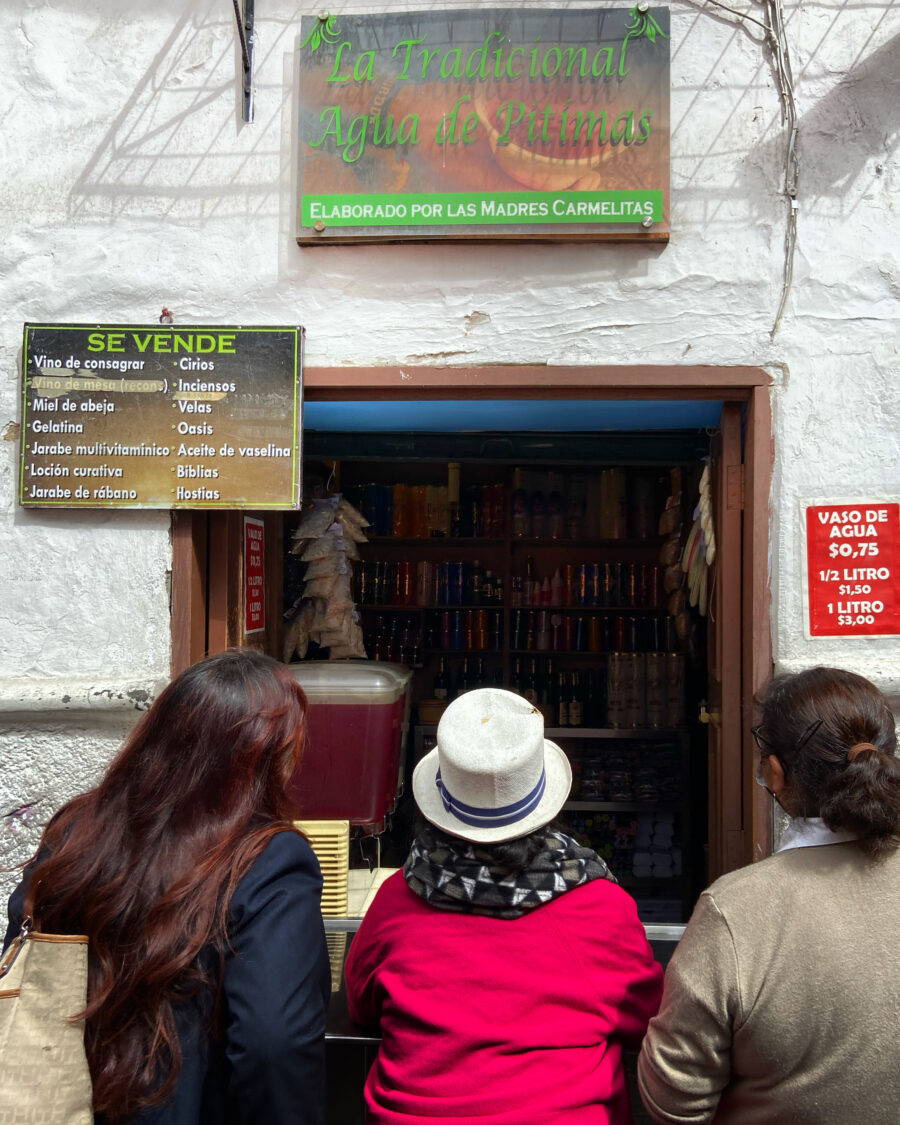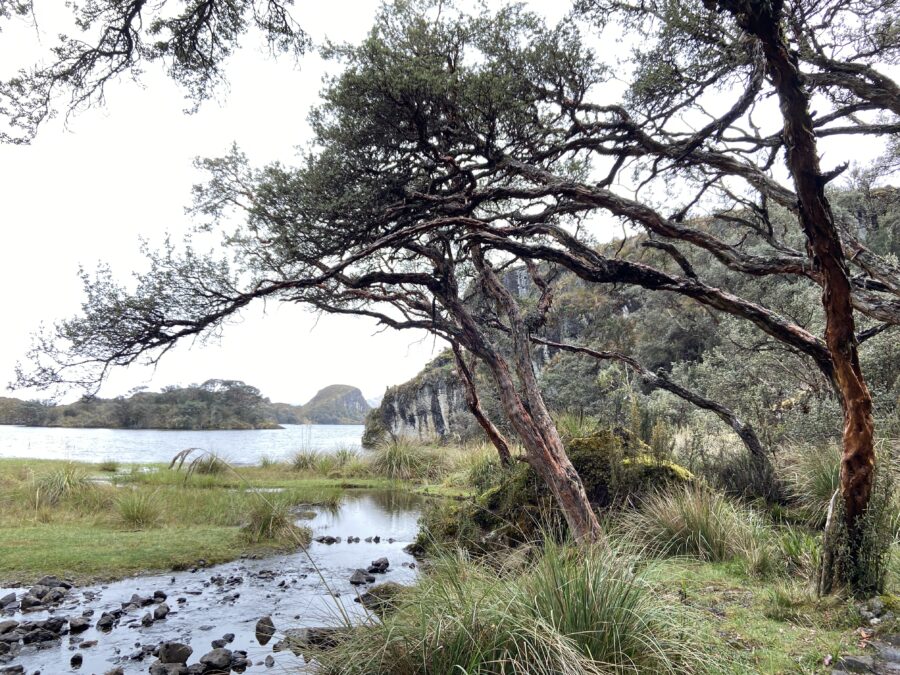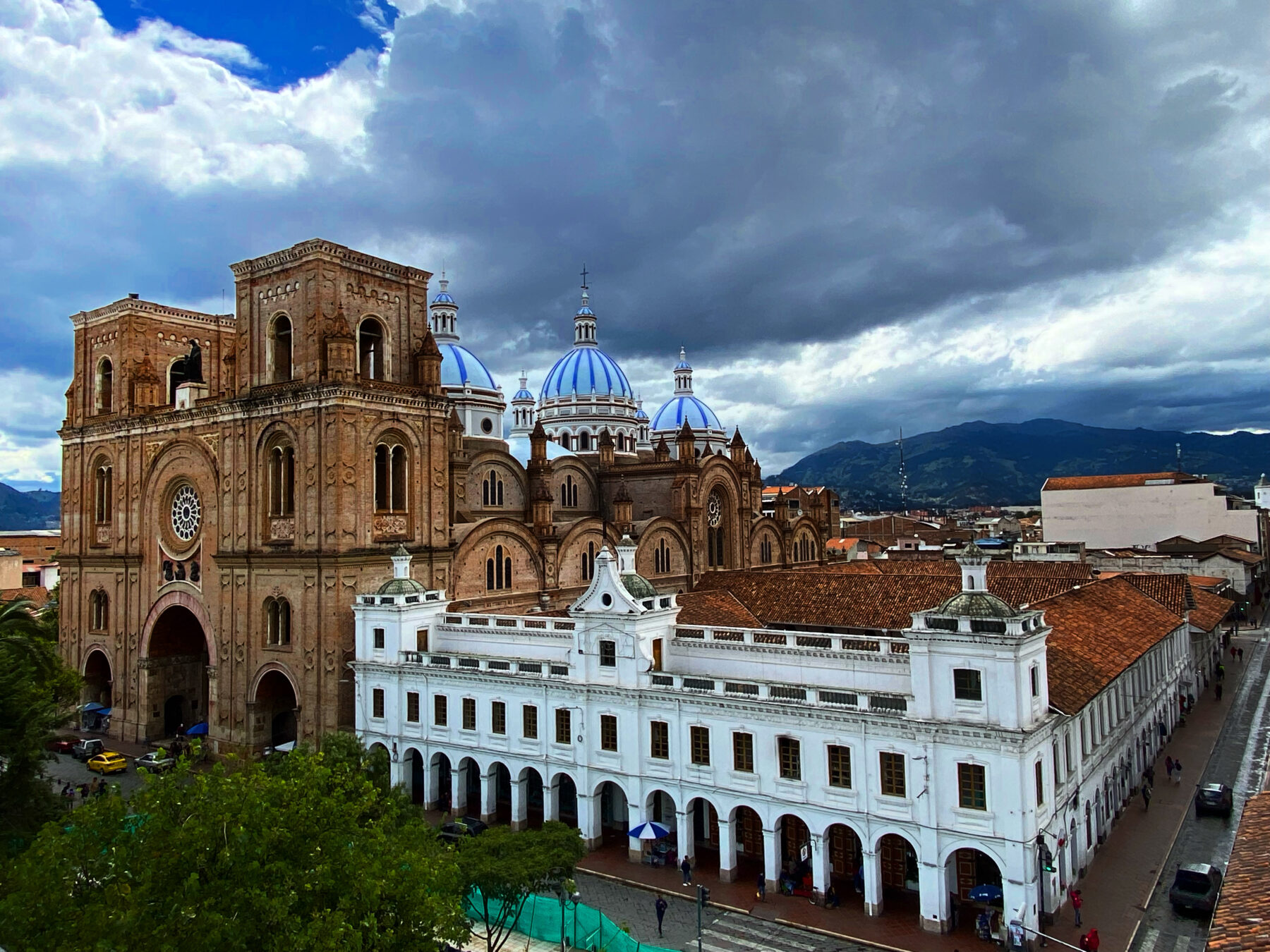Cuenca and the El Cajas National Park
Of Cuenca I remember many things.
For example, the first night in the provincial capital of Azuay, my travelling companion and I made a mess of things. The hotel where we sleep from the outside doesn’t look like anything much: a guesthouse, perhaps, we would call it in English. Inside, things are quite different. Our room – surgically clean – is actually an entire flat on the first floor, at the end of a staircase as big as the Spanish Steps, parquet floors on which we unabashedly spread our dusty backpacks, a bed that is really too big even for two very tall adults, and neat but strangely out-of-place objects scattered everywhere: a faux-new typewriter, glass abat-jours reminiscent of those found in the bazaars of Istanbul, crystal photo frames still inside the cellophane, two gigantic wardrobes into which I fit without too much trouble. But above all the bathroom, the setting for the drama: marble, lots of marble, white, black, silver; the shower knobs in fake gold. If I deeply love South America, it is also for this reason: for the exaggeration of some places, for the disproportion between the inside and the outside. In South America, life is lush and doesn’t care if there is no unique style. Life is not a film set where everything is arranged down to the last detail.
Anyway, I was saying: the big mess. At midnight, my friend gets in the shower. She turns on the tap. The tap remains gloriously in her hand. The water, like the Amazon River, begins to pour not only from the shower hose, but also from the wall where a few moments before the tap stood. Within minutes, we are in the middle of a flood. In my underwear and T-shirt, I go down to reception: empty. I start ringing the bell as if the troops of the Conquistadors were coming. Nothing. In the hotel there are only the two of us and our other four travelling companions, but they are sleeping on another floor, so they do not come to the rescue. So, in a surreal way, as I move in search of the staff, I hear like an echo the water continuing to flow upstairs. Out of the darkness, illuminated by the torch of a mobile phone, pops a little head: the guy who had greeted us only an hour or so before, looks at me as if I had three heads. ‘We’ve broken the shower. Water everywhere,’ I stammer in my made-up Spanish. He follows me, in medium quick speed, perhaps more for the expression on my face than the correctness of my grammar. On the floor of our room, a flurry of towels tries in vain to stop the waterfalls coming from the bathroom. The boy enters the shower with his clothes on and tries to block the water with his hands: he pushes it into the hole in the wall, but it comes out stronger from above. After a few minutes of this futile battle, however, the water stops. Silence surrounds us. With the wounded but stoic pride of an epic hero who has had his beloved swiped, the boy announces: ‘The water supply for the whole hotel is exhausted until tomorrow. We will fix the shower in the next few days. Take your things. Follow me.” And so, we do: me in my underwear and T-shirt, my friend with wet, half-soapy hair, we close our backpacks, we must look a bit like Picasso paintings, and at two in the morning, we collapse on the bed in our new room. It doesn’t occur to anyone to take a shower. Curtain.

But there is more to be said of Cuenca. For example, that Panama Hats are made, not in Panama, but at the Panama Hat Museum – Homero Ortega. Let me explain: these hats, which are a World Heritage Site and have been worn by celebrities and great historical figures (from Pavarotti to Judi Dench, from Humphrey Bogart to Ernest Hemingway, to name but a couple), did indeed arrive in Panama and from there depart for Europe and far beyond, but their roots are in Ecuador, specifically in the western region of Manabi, where skilful craftsmen weave the threads of fibre from the toquilla palm, after they have been boiled. The workmanship is astounding.

Although it is well known that this hat tends to fade, when it reaches our hands, its creators only weave the main body of the hat at certain times of the day, at dawn or dusk, to prevent sweat from spoiling the colour and quality of the straw. During the visit to the museum (highly recommended), an echo of a football match suddenly reaches me: Ecuador is playing against Holland today. Following the hubbub, I lean into the room where the cheering is coming from: there, several artisans are following the World Cup. I greet everyone, shouting ‘Fuerza Ecuador’, and retracing my steps, I realise that it is an ‘enlightened’ workplace: for example, there are nursing rooms for the employees; for all the workers there is at least one kitchen.

Of Cuenca, then, I remember the blue domes of the Cathedral de la Inmaculada Concepcion (also known as Catedral de Comayagua), one of the largest cathedrals in South America. But above all, I remember the quinceañera in front of its main gate: she looks like a princess ready to go to the ball in her pink dress, a tiara, her bouquet carefully held in her immaculate hands.

All around her are not only family members, but also a couple of professional photographers, so I approach her and ask if I can photograph her. The mother is the most enthusiastic and, thinking that she does not know what is going on, explains the situation to me: the quinceañera is a very important cultural celebration in many South American countries such as Ecuador, and marks a girl’s transition from childhood to womanhood on her 15th birthday. This elaborate and significant event usually includes a religious ceremony, such as a Catholic Mass, followed by a festive reception with family and friends. The quinceañera also receives symbolic gifts during the celebration: a cross, a Bible and a sceptre, representing different aspects of her life and values. Her mama quickly has to say goodbye then: the second part of the celebrations is about to begin – dancing, music, food and speeches, precious memories for both the young princess and her family.

Of Cuenca, I also remember the Plaza de las Flores near the Cathedral. One of the most picturesque pharmacies in Cuenca (and perhaps in Ecuador) is located here and sells a wide variety of handicrafts with medicinal properties made by Carmelite nuns who elaborate with special care restorative wine, radish syrup, multivitamin drinks, honey, lotions for muscle aches, creams to combat skin problems and, of course, the very popular agua de pítimas, a drink that has long been produced in the Carmen de la Asunción convent, where the nuns cultivate their gardens full of medicinal plants and herbs. Their tradition of preparing infusions of all kinds led them to invent this peculiar drink prepared with rose and carnation petals, valerian, lemon verbena, lemon and other herbs. When they discovered that it had excellent medicinal properties and was also delicious and refreshing, they decided to start selling it to the public more than 70 years ago.
In the middle of the flower market, I meet a curandera, who gently bangs tree branches around a young girl wearing the jersey of the Ecuadorian national team, freeing her from unhealthy energies. Some stands also sell traditional masks of the country: the most beautiful, which I bought, and which now sits in my kitchen, is that of the Diablo Huma. Its name means ‘water spirit’ and refers to two concepts: the vital energy principle and that of an initiated person. Its origin is found in Caranqui mythology, which tells of an initiatory journey. In Ecuador, it is colloquially described as a being who immersed himself for three days in a waterfall to make a pact with the devil and acquire his power and fighting skills for the encounters he is to have. To avoid referring to the ‘devil’ in the word, he is usually called aya huma, meaning spirit head. Places like this made me fall in love with Ecuador: this mixture of the sacred and the profane, of reality and natural magic (I also talked about it in this article, dedicated to Quito).

Walking then for about ten minutes from the city centre, one arrives at the Tomebamba river, a perfect place to stroll and leave the popular city behind. In a play of mirrors, I had the feeling that I was not in South America but back in Europe: the river is lined with colonial houses that have been passed down from generation to generation, very photogenic, bordering a narrow path well known to the locals, who come here to cycle, jog or picnic every day, but especially on weekends. I sit with my fellow travellers on the grass, and we watch life go by.

The last reminder of Cuenca is located only 30 km from this beautiful city: the El Cajas National Park is a unique place for many reasons. Formed thousands of years ago because of tectonic activity and glacial erosion, El Cajas National Park is composed of kilometres and kilometres of sloping beige hills, deep blue lagoons and a truly astonishing variety of plants that highlight the region’s unique altitude. The term ‘Cajas’ is in fact derived from the word ‘cassa’, which in Quechua means ‘gateway to the snow-capped mountains’, probably because El Cajas is located right at the base of the Andes, separating the imposing mountains from the surrounding plains. Barren and open in some parts and densely vegetated in others, this place has all kinds of ecosystems packed into a single region.

The reason for the fabulous landscape of Cajas is its unique altitude. Having been shaped by glacial activity, the park has an interesting mixture of lower and higher altitudes, with swamps and lakes in between. Below 3,500 metres, the park is composed of evergreens and vibrant trees, usually taller than those higher up. Above 3,500 metres, on the other hand, the landscape is known as páramo, or high-altitude grassland. This area consists of short, hardy plants and grasses and forms the largest and most open portions of the park. They are known for their more prickly, firm and stocky structure, as they have evolved to absorb moisture from the fog at an otherwise moisture-free altitude.
If there is one plant for which El Cajas National Park is famous, it is the Polylepis tree, or ‘Paper Tree’. This type of tree is tall, evergreen and very dense. You will recognise it immediately by its short, stubby leaves and what look like dead branches (I don’t think they really are!). Be careful because you can get a nasty scratch if you get too close. Another fascinating feature of this park are the quinoa forests that dot the path at every step here at about 4000 metres above sea level: these wonderfully strange trees have mostly bare branches, but are known for their deformed, windswept trunks. They swoop and twist in truly fantastic ways.
The abundance of life is everywhere in Ecuador.
